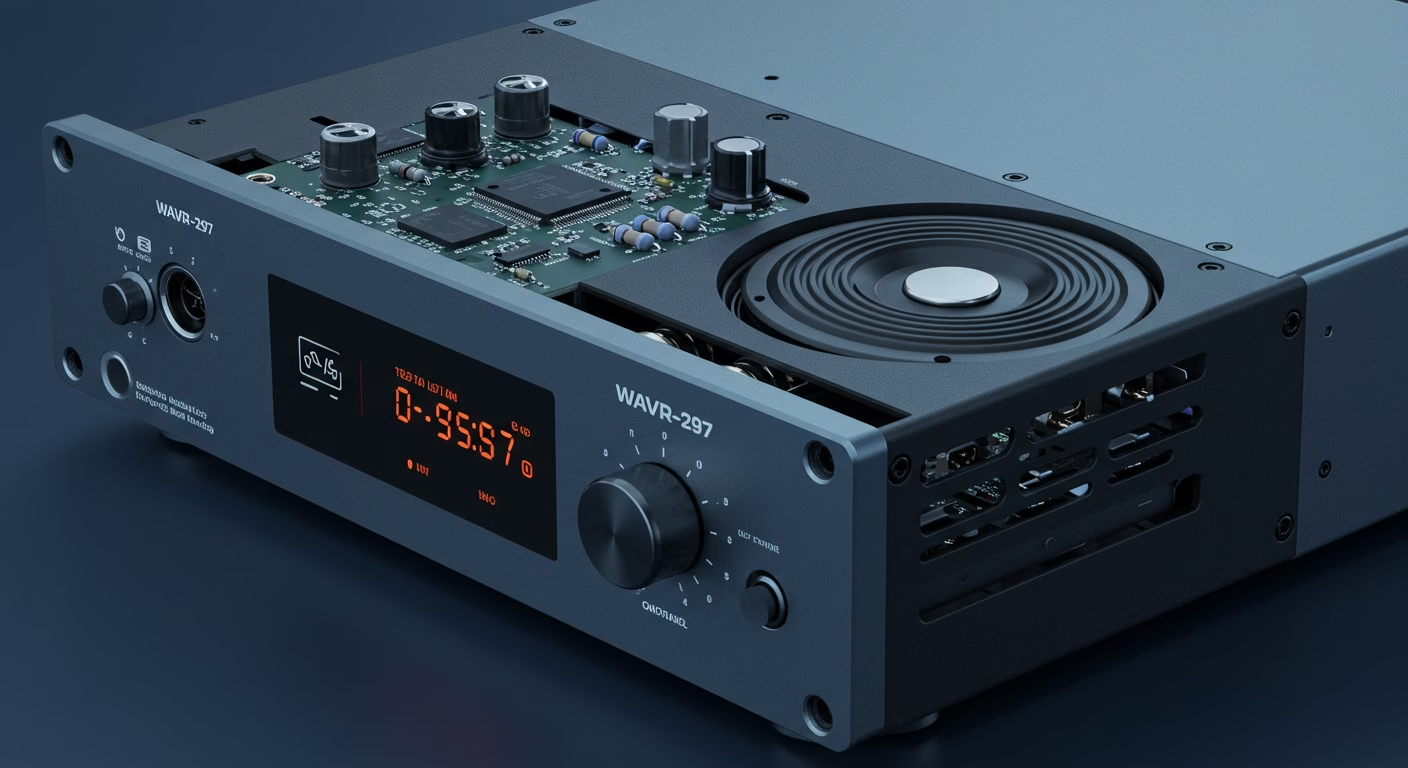TECHNOLOGY
Straight Talk vs. Cricket Wireless: A Comprehensive Comparison (2025)

Choosing between Straight Talk and Cricket Wireless can be challenging since both are popular Mobile Virtual Network Operators (MVNOs) offering affordable alternatives to major carriers. To begin with, let’s compare their networks because coverage depends on location. While Straight Talk uses multiple major networks, Cricket operates exclusively on AT&T’s infrastructure.
When examining plans and pricing, both offer competitive options, but Cricket includes taxes in its advertised rates whereas Straight Talk does not. In terms of features, Cricket provides perks like free HBO Max while Straight Talk offers more flexibility with bring-your-own-device policies. Additionally, Cricket includes mobile hotspot data on most plans whereas Straight Talk restricts this feature on some options.
On the other hand, Straight Talk often provides better international calling options. Furthermore, Cricket’s unlimited plans have speed caps, but Straight Talk’s speeds are uncapped. Ultimately, your choice depends on priorities. If network reliability is most important, Cricket may be preferable. However, if flexibility matters more, Straight Talk could be the better option.
Therefore, carefully compare coverage, pricing, and features before deciding. In conclusion, both are strong choices, so weigh the pros and cons based on your specific needs to make the best decision.
Understanding MVNOs: Straight Talk and Cricket’s Foundation
Before comparing Straight Talk and Cricket, it’s important to note that both are MVNOs, meaning they lease network capacity from major carriers. While this allows affordable pricing, their network approaches differ significantly. Straight Talk, owned by TracFone, uniquely operates across all four major networks, therefore offering wider coverage flexibility. However, Cricket Wireless, being an AT&T subsidiary, uses only AT&T’s network, which results in more consistent performance.
When considering coverage, Straight Talk’s multi-network approach provides broader options, whereas Cricket’s single-network system ensures reliability. Additionally, Straight Talk may offer better rural coverage, but Cricket typically delivers stronger urban performance. Ultimately, your location and needs will determine which provider works best.
Network Coverage and Performance
Straight Talk’s Multi-Network Advantage
Straight Talk’s most distinctive feature is its ability to operate on multiple carrier networks. When you sign up, you can choose a SIM card compatible with:
- Verizon’s network (best for rural coverage)
- AT&T’s network (strong nationwide coverage)
- T-Mobile’s network (best for urban 5G speeds) 2
This flexibility means you can select the network that performs best in your area. For example, if Verizon has superior coverage where you live, you can opt for a Verizon-compatible Straight Talk SIM. This multi-network approach gives Straight Talk a coverage advantage in theory, though actual performance depends on your specific location and chosen network 13.
Cricket’s AT&T Network Reliability
Cricket runs exclusively on AT&T’s network, which offers:
- Strong nationwide coverage, particularly in rural areas
- Consistent performance without network switching
- Access to AT&T’s growing 5G network 3
While Cricket previously imposed speed caps (8 Mbps on most plans), they’ve recently removed these limitations, offering full AT&T network speeds on their higher-tier plans 2. Cricket customers also benefit from AT&T’s extensive roaming agreements, which can provide better coverage in some rural areas compared to Straight Talk.
Winner: Straight Talk for network flexibility, Cricket for consistency
Plan Options and Pricing Comparison
Straight Talk Plans (2025)
Straight Talk offers straightforward plan options with three primary tiers:
- Basic Plan ($30/month)
- 100MB data
- 1,500 minutes
- Unlimited texts
- Best for very light users or backup phones: 110
- Unlimited Bronze ($35/month)
- 10GB high-speed data
- 5GB hotspot data
- Unlimited talk/text to Canada & Mexico 10
- Unlimited Silver ($45/month)
- Unlimited data (with potential throttling after 60GB)
- 5GB hotspot data
- International calling features 210
- Unlimited Gold ($55/month)
- Unlimited premium data
- 15GB hotspot
- 100GB cloud storage 10
- Unlimited Platinum ($65/month)
- 20GB hotspot
- HD video streaming
- Expanded international calling 10
Straight Talk also offers multi-month discounts when prepaying for 3-12 months of service.
Cricket Wireless Plans (2025)
Cricket provides more structured plan options with clearer distinctions between tiers:
- 5GB Plan ($30/month)
- 5GB high-speed data
- Unlimited talk/text
- Basic option for light data users: 9
- 10GB Plan ($40/month)
- 10GB high-speed data
- Unlimited talk/text
- Mid-tier option 9
- Unlimited Core ($55/month)
- Unlimited data (may slow during congestion)
- SD video streaming (480p)
- Mexico/Canada usage included 9
- Unlimited More ($60/month)
- Premium unlimited data (no deprioritisation)
- 15GB mobile hotspot
- HBO Max included (with ads)
- 150GB cloud storage 9
Family Plans: While comparing options, Cricket stands out particularly for its multi-line discounts, which can lead to significant savings for families. For instance, four lines on the Unlimited Core plan cost just 100/month—∗thatworksoutto∗only25 per line. Additionally, these bundled savings not only make Cricket more affordable but also simplify billing for groups. As a result, families and shared plans often find better value here compared to individual plans.
Winner: While both carriers have merits, Cricket emerges as the better choice for family plans due to its multi-line discounts. On the other hand, Straight Talk offers superior flexibility when it comes to individual plans, especially for those who value no-contract options. Furthermore, Straight Talk’s multi-carrier network support provides wider coverage whereas Cricket remains limited to AT&T’s infrastructure. Ultimately, your decision should balance these key differences based on your specific needs.
Data Speeds and Throttling Policies
Both carriers implement some form of data management:
Straight Talk:
- Basic plans have hard data caps (e.g., 10GB on Bronze)
- Unlimited plans may throttle speeds after 60GB usage
- No artificial speed caps (depends on underlying network) 110
Cricket:
- Removed Mbps speed caps on most plans
- Unlimited Core may slow during congestion
- Unlimited More maintains premium speeds. 29
5G Access:
Both carriers offer 5G access where available on their respective networks 29.
Winner: Tie – depends on specific plan and location
Phone Compatibility and BYOD Options
Bring Your Own Device (BYOD):
Both carriers support BYOD programmes:
- Straight Talk: Works with most unlocked phones across all major networks 1
- Cricket: Compatible with AT&T network phones 3
Phone Selection:
- Both offer a range of budget and flagship devices
- Straight Talk has slightly more options due to multi-network support
- Cricket provides better financing options 1
Winner: Straight Talk for broader compatibility
Additional Features and Perks
Hotspot Data:
- Straight Talk includes hotspot on most unlimited plans (5-20GB)
- Cricket only offers hotspot on Unlimited More plan (15GB) 910
International Features:
- Straight Talk offers more international calling options
- Cricket includes texting to 37 countries on unlimited plans 910
Streaming Quality:
- Cricket limits video to 480p on most plans
- Straight Talk allows HD streaming on Platinum plan 910
Winner: Straight Talk for more inclusive features
Customer Service and Support
Both carriers receive mixed reviews for customer service:
- Straight Talk: Available 8am-11:45pm daily.
- Cricket: 24/7 support 9
However, users report similar experiences with both, typical of budget carriers 1.
Winner: Slight edge to Cricket for 24/7 availability
Which Carrier Should You Choose?
Best For Straight Talk:
- Individual users who want network flexibility
- Those needing Verizon or T-Mobile network access
- Users who want more hotspot data
- People who prefer pay-as-you-go options 12
Best For Cricket:
- Families needing multi-line discounts
- Heavy data users who want premium unlimited data
- Those in areas with strong AT&T coverage
- Users who want included perks like HBO Max 19
Final Verdict
After examining all factors, our recommendations are:
Best Overall for Individuals: Straight Talk Unlimited Silver ($45) offers excellent value with unlimited data and a good hotspot allowance of10.
Best for Families: Cricket’s Unlimited Core plan with multi-line discounts provides unbeatable value at $25/line for four lines.
Best Premium Plan: Cricket Unlimited More ($60) with HBO Max and premium data is the better high-end option. 9.
Best Budget Option: Straight Talk Basic ($30) works well for minimal users 10.
First and foremost, both carriers have substantially improved in recent years by eliminating speed caps while simultaneously enhancing plan options. Nevertheless, the optimal choice ultimately depends entirely on your specific requirements. To begin with, you should carefully evaluate network coverage, as performance significantly varies by location. Similarly, data needs must be assessed, since plans differ not only in data allowances but also in speed tiers. Moreover, budget considerations clearly matter, given that pricing structures vary considerably between providers.
On the contrary, if unlimited high-speed data is absolutely essential, one provider may be superior. Conversely, for budget-conscious users, the alternative might prove more suitable. Furthermore, additional features such as hotspot allowances or streaming benefits should be examined. Meanwhile, equally important factors like network reliability and customer service must be weighed. After comparing all these elements, you’ll be better positioned to decide. Thus, thorough research prior to committing is strongly advised. In summary, while both carriers have progressed, the ideal selection truly hinges exclusively on your personal priorities and usage patterns.
FASHION
Nitri Tech Gloves: The Ultimate Hand Protection Solution

In modern workplaces, proper hand protection has become increasingly vital across numerous fields. While traditional gloves often fail to provide both durability and dexterity, Nitri Tech Gloves have emerged as a game-changing solution. These innovative gloves combine advanced nitrile compounds with smart technology to offer unmatched performance.
To begin with, Nitri Tech Gloves feature a unique formulation that enhances grip while maintaining flexibility. Unlike ordinary gloves, they resist oils, chemicals, and abrasions without sacrificing tactile sensitivity. Additionally, their breathable design prevents discomfort during extended wear, making them ideal for long shifts.
Beyond basic protection, Nitri Tech Gloves incorporate several groundbreaking features. For instance, their textured fingertips improve precision for delicate tasks, while the reinforced palms withstand heavy use. Moreover, they remain touchscreen-compatible, allowing seamless device operation—a feature particularly valuable in medical and technical fields.
The applications for Nitri Tech Gloves span countless industries. In healthcare, they provide reliable barrier protection against contaminants. Similarly, automotive professionals appreciate their oil resistance, whereas food handlers benefit from their FDA-compliant materials. Even outdoor enthusiasts choose them for weather-resistant durability during demanding activities.
What truly sets Nitri Tech Gloves apart is their innovative approach to hand safety. Rather than simply creating thicker gloves, engineers focused on smarter materials that adapt to user needs. As a result, wearers enjoy both superior protection and natural movement—a rare combination in protective gear.
Ultimately, Nitri Tech Gloves represent the future of hand protection. By merging advanced chemistry with ergonomic design, they outperform conventional options in every aspect. Whether for professional use or personal projects, these gloves deliver the perfect balance of safety, comfort, and functionality that modern users demand.
What Are Nitri Tech Gloves?
Nitri Tech Gloves are high-performance gloves made from nitrile, a synthetic rubber that outperforms latex and vinyl in strength, flexibility, and chemical resistance. These gloves are engineered for industries requiring precision, durability, and hygiene, including:
-
Medical & Healthcare (surgical, dental, examination)
-
Industrial & Automotive (mechanics, construction, welding)
-
Food Handling & Processing (restaurants, meatpacking, packaging)
-
Laboratory & Chemical Handling (research, pharmaceuticals, cleaning)
-
Tactical & Outdoor Use (military, shooting, survival)
The “Tech” in Nitri Tech refers to advanced enhancements such as:
✔ Micro-textured grips for better control
✔ Breathable designs to reduce sweating
✔ Antimicrobial coatings for hygiene
✔ Touchscreen compatibility for tech use
Key Features of Nitri Tech Gloves
1. Unmatched Durability (Nitrile Material)
Nitrile rubber provides:
-
3x more puncture-resistant than latex
-
Resistance to oils, solvents, and chemicals
-
Hypoallergenic (safe for latex-sensitive users)
-
Longer shelf life without degradation
2. Superior Grip & Dexterity
-
Textured fingertips enhance grip on wet/oily surfaces
-
Ergonomic design allows natural hand movement
-
Thin yet strong (3-8 mil thickness options)
3. Comfort & Breathability
-
Micro-porous coatings prevent sweaty hands
-
Elasticized wrists for a snug fit
-
Powder-free options reduce irritation
4. Specialized Coatings & Treatments
-
Antimicrobial – Reduces bacteria growth (ideal for medical/food use)
-
Cut-resistant – Reinforced fibers for industrial safety
-
Thermal-resistant – Withstands high/low temperatures
5. Eco-Friendly Innovations
Some Nitri Tech Gloves are:
-
Biodegradable (breaking down faster than standard nitrile)
-
Made from sustainable materials
Applications of Nitri Tech Gloves
1. Medical & Healthcare
-
Examination & Surgical Gloves – Sterile, powder-free, and tactile-sensitive.
-
Dental & Veterinary Use – Precision grip for delicate procedures.
2. Industrial & Automotive
-
Mechanics – Oil-resistant, anti-slip grip for tool handling.
-
Construction & Welding – Heat and abrasion-resistant variants.
3. Food Industry
-
FDA-compliant – Safe for direct food contact.
-
Cut-resistant – Used in meat processing.
4. Laboratories & Chemical Handling
-
Acid & solvent-resistant – Protects against hazardous spills.
5. Tactical & Outdoor Activities
-
Military & Law Enforcement – Enhanced grip for weapon handling.
-
Shooting & Survival – Weatherproof and durable.
Comparison: Nitri Tech vs. Latex & Vinyl Gloves
| Feature | Nitrile Gloves | Latex Gloves | Vinyl Gloves |
|---|---|---|---|
| Durability | ★★★★★ (High) | ★★★☆☆ (Moderate) | ★★☆☆☆ (Low) |
| Chemical Resistance | ★★★★★ | ★★★☆☆ | ★★☆☆☆ |
| Allergy Risk | None | High (latex) | None |
| Tactile Sensitivity | ★★★★★ | ★★★★☆ | ★★☆☆☆ |
| Cost | Moderate | Low | Very Low |
Why Nitri Tech Wins:
✔ Stronger than latex & vinyl
✔ Safer (no latex allergies)
✔ Better grip & comfort
Technological Innovations in Nitri Tech Gloves
1. Smart Glove Technology
-
Touchscreen-compatible – Use phones/tablets without removing gloves.
-
Haptic feedback – Used in robotics & VR training.
2. Self-Healing Nitrile
-
Puncture-sealing technology – Small tears “repair” themselves.
3. Temperature-Regulating Gloves
-
Phase-change materials (PCMs) – Keep hands warm or cool as needed.
4. Biometric Sensors (Future Tech)
-
Heart rate & fatigue monitoring – For industrial safety.
How to Choose the Right Nitri Tech Gloves
-
Purpose – Medical, industrial, food handling, etc.
-
Thickness – 3-5 mil (precision tasks) vs. 8-15 mil (heavy-duty).
-
Cuff Style – Extended cuffs for extra protection.
-
Powdered vs. Powder-Free – Powder-free for sterile environments.
-
Certifications – Check FDA, CE, or ANSI compliance.
Conclusion
Nitri Tech Gloves are transforming hand protection by combining strength, comfort, and innovation for professionals in every industry. To begin with, these gloves use self-healing materials, ensuring they last longer even under tough conditions. At the same time, they remain touchscreen-compatible, so users can operate devices without removing them. Beyond that, integrated biometric sensors add an extra layer of safety by tracking vital signs in real time.
For example, surgeons rely on this for their precision and sterility, while mechanics depend on their resistance to oils and abrasions. Likewise, chefs prefer them for handling sharp knives and hot pans, and outdoor enthusiasts trust their weather-resistant durability. In short, no matter the job, these gloves provide top-tier performance.
What’s more, choosing Nitri Tech Gloves leads to long-term savings. Unlike ordinary gloves, they are built to withstand heavy use, meaning fewer replacements over time. Consequently, professionals reduce costs without sacrificing protection. Not only are these gloves tough, but they are also designed for comfort, allowing for extended wear without discomfort.
Compared to basic nitrile gloves, Nitri Tech Gloves set a higher standard with advanced features. For instance, their ergonomic fit reduces hand strain, while the lightweight materials improve flexibility. As a result, users can work more efficiently while staying safe.
In conclusion, they are a must-have for anyone who values safety and innovation. Whether in medicine, construction, or outdoor adventures, these gloves adapt to any task. In the end, their cutting-edge technology and rugged design make them the best choice for professionals everywhere. By opting for Nitri Tech Gloves, you invest in durability, comfort, and unbeatable protection—redefining what hand safety means.
TECHNOLOGY
WAVR-297: The Future of Sound Innovation

Introduction
The audio technology landscape is undergoing a seismic shift with the arrival of wavr-297. This revolutionary breakthrough redefines what’s possible in sound reproduction, combining cutting-edge engineering with intelligent processing to deliver an unparalleled listening experience.
At its core, wavr-297 represents a giant leap forward in three critical areas:
- Sound Quality – Utilizing advanced psychoacoustic algorithms to reproduce audio with studio-grade precision
- Noise Reduction – Implementing adaptive filtering that outperforms conventional ANC systems
- Application Versatility – Seamlessly integrating across consumer, professional, and immersive audio platforms
What makes wavr-297 truly transformative is its ability to maintain these exceptional standards whether powering premium headphones, studio monitoring systems, or VR audio environments. The technology’s adaptive architecture automatically optimizes performance for each use case while maintaining remarkable energy efficiency.
As audio becomes increasingly central to our digital experiences – from entertainment to communication to virtual workspaces – it is positioned to become the new gold standard. Its introduction marks a watershed moment where technical capability finally matches human auditory perception, promising to make every listening experience more immersive, more accurate, and more emotionally engaging than ever before.
This comprehensive article explores:
- What WAVR-297 is and how it works
- Key features and technological advancements
- Applications in various industries
- Comparison with existing audio technologies
- Future potential and industry impact
By the end of this guide, you’ll understand why wavr-297 is considered a game-changer in audio engineering.
What Is WAVR-297?
WAVR-297 represents a quantum leap in audio processing technology, combining sophisticated algorithms with innovative hardware architecture to achieve unprecedented sound reproduction. This groundbreaking system was meticulously developed through years of research in psychoacoustics and digital signal processing (DSP), resulting in a solution that pushes the boundaries of what’s possible in audio fidelity.
At its core, wavr-297 employs a multi-layered processing approach that preserves audio integrity while minimizing distortion across the entire frequency spectrum. The technology achieves this through adaptive algorithms that dynamically adjust to different audio content and listening environments. Unlike conventional systems that apply uniform processing, WAVR-297 intelligently tailors its approach to each unique sound profile.
The system’s psychoacoustic modeling capabilities allow it to enhance perceived audio quality in ways that go beyond simple technical measurements. By understanding how human hearing interprets sound, it optimizes spatial imaging, dynamic range, and tonal balance to create a more natural listening experience. This results in remarkable clarity where subtle details emerge without artificial enhancement.
What truly sets wavr-297 apart is its ability to maintain these quality improvements while operating with exceptional efficiency. The architecture minimizes latency and power consumption, making it practical for everything from professional studio equipment to portable consumer devices. This combination of performance and practicality positions WAVR-297 as a transformative force in audio technology.
How Does WAVR-297 Work?
- Adaptive Noise Cancellation (ANC) – Uses AI-driven algorithms to filter background noise in real time.
- 3D Spatial Audio Enhancement – Creates immersive soundscapes for VR, gaming, and movies.
- Low-Latency Processing – Ensures seamless audio synchronisation for live performances and streaming.
- Energy Efficiency – Optimises power consumption without compromising sound quality.
This combination of hardware and software makes WAVR-297 ideal for next-gen audio devices.
Key Features
1. Ultra-High Resolution Audio Support
- Processes 32-bit/384 kHzaudio, surpassing CD-quality sound.
- Reduces compression artefacts in streaming services.
2. AI-Powered Sound Personalization
- Learns user preferences to adjust EQ, bass, and treble dynamically.
3. Multi-Device Synchronization
- Enables seamless audio switching between headphones, speakers, and smart devices.
4. Advanced Active Noise Cancellation (ANC)
- Outperforms traditional ANC by adapting to different environments (e.g., aeroplanes, offices).
5. Low Power Consumption
- Extends battery life in wireless earbuds and portable speakers.
Applications
1. Consumer Electronics
- Wireless Earbuds & Headphones – Deliver studio-quality sound in compact form factors.
- Smart Speakers – Enhances voice assistant clarity and music playback.
2. Professional Audio Production
- Studio Monitors & Mixing – Provides accurate sound reproduction for producers.
- Live Sound Engineering – Reduces feedback and latency in concerts.
3. Gaming & Virtual Reality
- 3D Spatial Audio – Creates lifelike directional sound in VR and esports.
- Real-Time Voice Chat Enhancement – Filters out keyboard and background noise.
4. Automotive Audio Systems
- In-Car Entertainment – Optimises sound for different seating positions.
- Noise Isolation – Reduces road and engine noise for calls and music.
5. Hearing Aids & Assistive Devices
- Enhanced Speech Clarity – Helps users with hearing impairments.
WAVR-297 vs. Existing Audio Technologies
| Feature | WAVR-297 | Traditional DSP | Competitor X |
|---|---|---|---|
| Resolution | 32-bit/384 | 24-bit/192 | 24-bit/96 |
| ANC Efficiency | AI-Adaptive | Fixed Filtering | Hybrid ANC |
| Latency | <5ms | 10- ms | 8- ms |
| Power Use | Low | Moderate | High |
Why WAVR-297 Wins:
- Higher fidelity with lower power drain.
- Smarter noise cancellation that adapts to environments.
- Future-proof for next-gen audio formats.
The Future of WAVR-297
- Integration with AI Voice Assistants – Smarter voice recognition in noisy settings.
- Augmented Reality (AR) Audio – Real-time sound mapping for AR glasses.
- Health Monitoring via Audio – Detecting respiratory rates through earbuds.
- Mainstream Adoption in Smartphones – Replacing legacy audio chipsets.
As audio becomes more central to tech experiences, WAVR-297 is poised to lead the industry.
Conclusion
WAVR-297 stands at the forefront of audio technology, revolutionizing how we experience sound. First, its fusion of advanced DSP and AI delivers unparalleled clarity across applications. Additionally, its energy-efficient design ensures high performance without compromising battery life.For consumers, this translates to crystal-clear calls and immersive music. Moreover, its adaptive noise cancellation outperforms conventional systems. Similarly, gamers enjoy lifelike spatial audio with near-zero latency.
For professionals, it offers unmatched precision. Specifically, studio engineers benefit from ultra-high-resolution audio processing. Meanwhile, live performers experience seamless synchronization.Beyond entertainment, this technology has healthcare applications. For instance, future earbuds may monitor vital signs through audio analysis. However, widespread adoption requires industry collaboration.
Currently, wavr-297 already surpasses competing solutions. In contrast to traditional DSP, it provides smarter, more efficient processing. Consequently, major manufacturers are integrating it into next-gen devices. Looking ahead, WAVR-297 will shape emerging technologies. From AR glasses to smart home systems, its potential is limitless. Ultimately, this innovation promises to redefine our auditory world.
In conclusion, wavr-297 isn’t just an upgrade – it’s the foundation for tomorrow’s audio experiences.
Ready to experience the next level of sound?
TECHNOLOGY
Ezaction777: Exploring the Online Phenomenon in Gaming and Digital Culture

Introduction
In the fast-paced world of online gaming and digital communities, unique usernames and aliases often become symbols of identity, skill, or even internet fame. One such name that has surfaced in various online spaces is “Ezaction777.” While its exact origins remain unclear, the username has appeared in gaming forums, social media, and streaming platforms, sparking curiosity among netizens.
This article explores the potential meanings behind Ezaction777, its presence in gaming culture, and why such usernames capture the attention of online audiences. We’ll examine its possible interpretations, its role in competitive gaming, and how digital personas like this contribute to internet subcultures.
What Does “Ezaction777” Mean?
The name Ezaction777 appears to be a combination of words and numbers, each carrying possible significance:
1. “Ez” – A Gaming Slang Stapple
- In online gaming, “EZ” is shorthand for “easy,” often used sarcastically or boastfully after winning a match.
- Players might say “GG EZ” (Good Game, Easy) to taunt opponents, making it a controversial but common term in competitive scenes.
2. “Action” – Energy and Excitement
- The word “action” suggests fast-paced gameplay, high-energy moments, or a dynamic playstyle.
- It could also imply that the user thrives in intense gaming scenarios.
3. “777” – Luck, Jackpots, and Symbolism
- The number 777 is widely associated with luck, especially in casino culture (slot machine jackpots).
- In gaming, it might represent a player’s confidence, a winning streak, or even a reference to gambling-themed games.
Combined, Ezaction777could signify a player who dominates matches effortlessly (“EZ”) while bringing high-energy gameplay (“action”) and a touch of luck (“777”).
Ezaction777 in Gaming Culture
1. Competitive Gaming & Esports
- Usernames like Ezaction777 often appear in shooters (Call of Duty, Valorant), MOBAs (League of Legends), and battle royales (Fortnite).
- Some players adopt flashy names to stand out, intimidate rivals, or build a personal brand.
2. Streaming & Content Creation
- If Ezaction777 belongs to a streamer or YouTTuber, the name could be part of their online persona.
- Catchy usernames help with memorability and branding on platforms like Twitch and TikTok.
3. Online Forums & Memes
- Some usernames gain traction through viral moments—whether from a funny clip, a controversial play, or a meme-worthy interaction.
- If Ezaction777 was involved in a notable gaming moment, it might have sparked discussions or parodies.
Why Do Gamers Choose Names Like Ezaction777?
1. Psychological Edge
- A bold name can intimidate opponents before a match even starts.
- Terms like “EZ” add a psychological layer, implying dominance.
2. Branding & Recognition
- Unique handles help gamers build a following, especially if they stream or post highlights.
- Numbers (like 777) make names more distinctive when common words are taken.
3. Inside Jokes & Personal Meaning
- Some usernames originate from personal jokes, favourite numbers, or cultural references.
- 777 might hold personal significance (e.g., a lucky number or a nod to casino games).
The Dark Side of “EZ” Culture
While Ezaction777 seems playful, the “EZ” mentality has sparked debates:
1. Toxicity in Gaming
- Phrases like “GG EZ” can come across as disrespectful, fuelling online toxicity.
- Some games (like Overwatch) even auto-censor “EZ” to discourage trash talk.
2. The Fine Line Between Banter and Bullying
- Playful taunting is part of gaming culture, but it can cross into harassment.
- Usernames with “EZ” might be seen as provocative, depending on context.
Is Ezaction777 a known player or streamer?
As of now, there’s no widely recognised gamer or content creator using Ezaction777 at a high-profile level. However:
- It could belong to a skilled player in niche communities.
- The name might have appeared in viral moments without mainstream recognition.
- Future trends could elevate it if associated with a notable event.
The Future of Gaming Handles Like Ezaction777
As online gaming grows, usernames will continue evolving:
- More Creativity & Uniqueness – With millions of gamers, standing out requires inventive names.
- Cross-Platform Identity – Players want consistent handles across Steam, Xbox, PlayStation, and social media.
- Memes & Viral Influence – A single viral clip can turn an obscure username into a legend.
Conclusion
Ezaction777 represents more than just a random username—it’s a microcosm of gaming culture, blending competitiveness, humour, and personal branding. Whether it belongs to a casual player, a rising streamer, or just exists as a clever alias, names like these define the playful yet fierce nature of online gaming.
As digital communities expand, we’ll see more Ezaction777s—each carrying its own story, reputation, and place in internet lore. The next time you spot a flashy gamer tag, consider what it might reveal about the player behind the screen.
Final Thought:
In digital gaming realms, a username serves as more than just identification—it’s a personal brand, a psychological tactic, and sometimes even a meme. Take “Ezaction777” as an example: this alias cleverly combines gaming slang (“EZ” for easy wins), high-energy gameplay (“action”), and lucky symbolism (“777”). Such names aren’t random; they’re carefully crafted to project confidence, skill, or humor within competitive spaces.
Beyond surface-level interpretation, handles like these reflect gaming culture’s unique blend of creativity and rivalry. The “EZ” element nods to playful (or sometimes toxic) trash talk, while the numbers add distinctiveness in oversaturated platforms. Whether Ezaction777 belongs to a casual player or an aspiring streamer, its existence highlights how online identities evolve—sometimes becoming inside jokes, viral phenomena, or even digital legends. Ultimately, gaming usernames are microcosms of internet culture, where anonymity meets personality, and every tag tells a story.
-

 EDUCATION5 months ago
EDUCATION5 months agoHCOOCH, CH₂, and H₂O: Key Molecules in Chemistry and Life
-

 BLOG4 months ago
BLOG4 months agoTeenthailand_11_SC1: Unveiling Thailand’s Youth Culture
-

 EDUCATION7 months ago
EDUCATION7 months agoQawerdehidom: Origins, Principles, and Modern Applications
-

 ENTERTAINMENT5 months ago
ENTERTAINMENT5 months agoWhat Are Coachella Co-Chairs: The Visionaries Behind the Iconic Festival
-

 BLOG5 months ago
BLOG5 months agoTheapknews.shop Health: Your Gateway to Wellness and Tech
-

 BLOG8 months ago
BLOG8 months agoPO18: A Comprehensive Guide to Its Meaning and Applications
-

 ART5 months ago
ART5 months agoKemono Nyl2: A Fusion of Art and Culture
-

 EDUCATION5 months ago
EDUCATION5 months agoNowCollege 1v1: Redefining Personalized Higher Education
